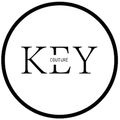Interviews
News Flash
Variety of IT tools to bring designs fast & cost effectively to markets
05 Mar '09
6 min read
As virtual reality takes over from conventional sampling, and new software aids collection management, IMB exhibitors take a chance in presenting a variety of tools developed to bring good design to market fast and effectively assuring cost savings, global communication and high quality in one run.
Fashion business is all about quick response, lots of styling, short runs of multiple goods, speed to market, flexibility, versatility, good fit and high quality. This necessitates an ever increasing number of styles, samples and pre-production work, all of which costs time, money and materials.
In a typical company over 50% of the total cycle time from design to the garment arriving in store still is taken in development. To meet the requirements of ever higher efficiency in nesting and cutting precious material the exhibitors of IMB 2009 all show either modifications or complete new versions with lots of added features of their nesting and marker making software to facilitate every days work in the making up industries.
The essence of a good design team is the innovation of its ideas over a whole range of garments reflecting the respective brand's design philosophy together with the ability to transfer the styling ideas into accurate patterns to achieve a good – consumer oriented - fit over the different sizes whilst respecting predefined price points. However, the heart of a design is in its management through pre-production and manufacture to ensure the ability to maintain product quality, meet deadlines, and control production costs.
Practically all CAD companies now offer advanced product development management systems (PDM), fully customizable, flexible, relational database software programs which control all relevant product development data providing the required interfaces to integrate other database systems within each user's IT network to form a product information system.
A good PDM system includes all style, colour, size information; costs; fabrics, trim, labelling and packaging information; production and quality specifications and make up instructions.
It should include an audit trail which tracks who did what, and when, during the product development cycle. All the steps of the development process for each line or collection should be made viewable quickly and simply to all people involved in the process and the need to input unnecessary or repetitive data when setting up new designs should be eliminated. Production capacities are to be taken into account.
'To Do' lists display the tasks delegated to various people or teams within the organization and when they are due for completion. When an assigned task is completed, the next task automatically appears on the list of the assigned person or team and the completed tasks are transferred automatically to the next in line.
Product Lifecycle Management (PLM) is the next depth of control. A better name for this would be Collection, or Range, Lifecycle Management as it starts even before the conception of any particular design within the collection.
Fashion business is all about quick response, lots of styling, short runs of multiple goods, speed to market, flexibility, versatility, good fit and high quality. This necessitates an ever increasing number of styles, samples and pre-production work, all of which costs time, money and materials.
In a typical company over 50% of the total cycle time from design to the garment arriving in store still is taken in development. To meet the requirements of ever higher efficiency in nesting and cutting precious material the exhibitors of IMB 2009 all show either modifications or complete new versions with lots of added features of their nesting and marker making software to facilitate every days work in the making up industries.
The essence of a good design team is the innovation of its ideas over a whole range of garments reflecting the respective brand's design philosophy together with the ability to transfer the styling ideas into accurate patterns to achieve a good – consumer oriented - fit over the different sizes whilst respecting predefined price points. However, the heart of a design is in its management through pre-production and manufacture to ensure the ability to maintain product quality, meet deadlines, and control production costs.
Practically all CAD companies now offer advanced product development management systems (PDM), fully customizable, flexible, relational database software programs which control all relevant product development data providing the required interfaces to integrate other database systems within each user's IT network to form a product information system.
A good PDM system includes all style, colour, size information; costs; fabrics, trim, labelling and packaging information; production and quality specifications and make up instructions.
It should include an audit trail which tracks who did what, and when, during the product development cycle. All the steps of the development process for each line or collection should be made viewable quickly and simply to all people involved in the process and the need to input unnecessary or repetitive data when setting up new designs should be eliminated. Production capacities are to be taken into account.
'To Do' lists display the tasks delegated to various people or teams within the organization and when they are due for completion. When an assigned task is completed, the next task automatically appears on the list of the assigned person or team and the completed tasks are transferred automatically to the next in line.
Product Lifecycle Management (PLM) is the next depth of control. A better name for this would be Collection, or Range, Lifecycle Management as it starts even before the conception of any particular design within the collection.
Popular News
Leave your Comments
Editor’s Pick
Folker Stachetzki
Brother Internationale Industriemaschinen GmbH
Andreas Rass
ZIMMER AUSTRIA | Digital Printing Systems
































-Ltd..jpg?tr=w-120,h-60,c-at_max,cm-pad_resize,bg-ffffff)





.jpg?tr=w-120,h-60,c-at_max,cm-pad_resize,bg-ffffff)
.jpg?tr=w-120,h-60,c-at_max,cm-pad_resize,bg-ffffff)






